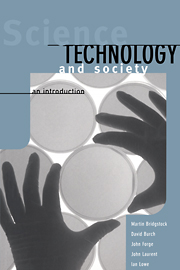Appendix 1 - Surviving in the Information Jungle
Published online by Cambridge University Press: 04 February 2010
Summary
In Chapter 2, reference was made to Derek J. de Solla Price's book, Little Science, Big Science (Price 1965). Price pointed out that the number of scientists has expanded about a million-fold since the time of Galileo. Naturally, this huge growth has led to an enormous increase in the amount of literature, in science and in related subjects.
Given the sheer scale of publication today, it is reasonable to ask: is important information going to be lost? The short answer is, not necessarily. To someone who knows their way about the information jungle, it is not difficult to locate any information you want. In parallel with the growth of the scientific literature, the means of navigating around it has developed. In our view, it is essential for any person who wants to be informed to understand these techniques, and this appendix outlines some of the most important methods.
In almost any library, the books are treated separately from the journals and magazines. The latter are usually referred to as ‘periodicals’. The means of finding your way around the books are usually better known, and more and more libraries are resorting to computer catalogues.
The computer catalogue
Computer catalogues vary, but they enable you to find out far more than the older card catalogues. Searches by author and title can be carried out, but perhaps the most important improvement is the use of keyword searching.
- Type
- Chapter
- Information
- Science, Technology and SocietyAn Introduction, pp. 257 - 262Publisher: Cambridge University PressPrint publication year: 1998



